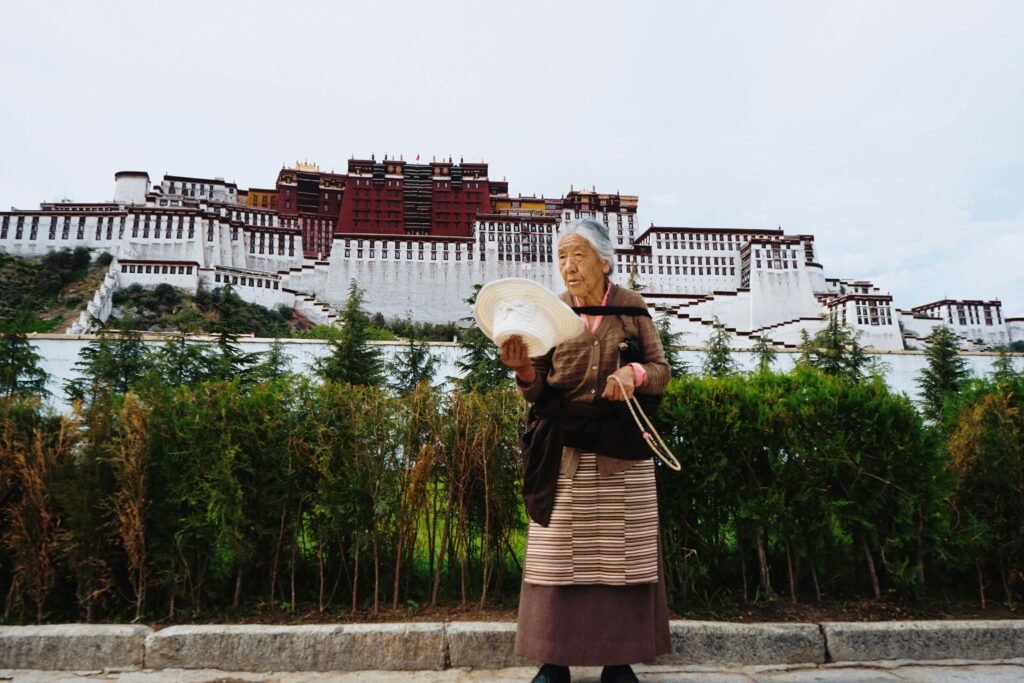Introduction: More Than Just a Necklace
When you hold a Tibetan mala in your hands, it may look like a simple string of beads—perhaps made of bone, wood, or stone. But behind every mala lies a rich and sacred journey, spanning mountains, temples, centuries-old traditions, and the hands of skilled monks and artisans.
At Chosenjew, we are honored to share with you the story behind each blessed mala, so you can appreciate not only its beauty but also its spiritual power and cultural heritage. This article will take you step-by-step through the incredible journey your mala undergoes—from its raw materials in the Himalayan highlands, to the meticulous craftsmanship of Tibetan artisans, the solemn blessing ceremonies by high lamas, and finally, its arrival at your doorstep as a sacred spiritual tool.
Chapter 1: The Source of Sacred Materials
The journey begins far from the bustle of cities, in the remote regions of Tibet and the Himalayas, where natural materials are gathered according to ancient spiritual criteria.
Bone Beads from Ethical Sources
Many Tibetan malas are made of yak or deer bone. These materials are sourced with respect—usually from animals that have died naturally, as harming animals for beads contradicts Buddhist principles of compassion. The bones carry the energy of impermanence and a deep connection to nature’s cycle of life and death.
Other Materials
Other malas may include turquoise, amber, wood, or seeds, each carrying their own symbolic meanings. For example, turquoise is known for healing and protection, while amber brings warmth and vitality. Regardless of material, each bead is seen as a vessel for spiritual energy.
Chapter 2: Handcrafting by Tibetan Artisans
Once the materials are gathered, they travel to skilled Tibetan artisans who begin the delicate process of shaping and polishing each bead.
The Traditional Craftsmanship
This process is deeply respectful and often involves hand carving, sanding, and drilling each bead. Unlike factory-produced jewelry, Tibetan malas bear the marks of their creators’ hands, with slight natural variations in size and texture that make each mala unique.
Symbolism in Design
Beads are sometimes shaped into traditional forms such as the “medicine disc” or skull beads, each carrying specific spiritual significance. The mala is typically strung into 108 beads—the sacred number symbolizing the 108 human defilements to overcome.
Chapter 3: The Blessing Ceremony
After craftsmanship, the mala enters the most sacred phase: the blessing ceremony, performed by Tibetan monks and lamas.
The Setting
Blessings often take place in mountain monasteries or hermitages surrounded by prayer flags fluttering in the cold wind and the faint scent of incense lingering in the air.
Ritual Elements
The monks use a combination of:
- Mantras and prayers: Recitations to invoke enlightened beings.
- Incense and butter lamps: To purify the space and create sacred energy.
- Mudras and visualization: To empower the beads with spiritual energy.
This ceremony transforms the mala from a beautiful object into a spiritually charged tool, ready to support meditation, prayer, and daily mindfulness.
Chapter 4: The Journey to You
After blessing, the mala is carefully packaged—often with a meaning card explaining its symbolism and care instructions—and sent across continents to your home.
Packaging With Care
Chosenjew ensures each mala is boxed with eco-friendly materials, respecting both spiritual tradition and environmental responsibility.
Arrival and First Use
When you receive your mala, it is more than jewelry—it is a spiritual companion. Many customers choose to perform their own small rituals: placing it on their altar, cleansing it with incense, or simply holding it to feel its energy.
Chapter 5: Caring for Your Blessed Mala
To maintain its spiritual potency, it’s important to care for your mala properly:
- Keep it clean and avoid harsh chemicals.
- Store it in a safe, respectful place when not in use.
- Occasionally cleanse it with incense smoke or sunlight.
- Treat it with respect as you would a sacred object.
Conclusion: From Sacred Origins to Your Spiritual Practice
Every blessed mala carries within it a story of reverence, craftsmanship, and spiritual intention. When you wear or hold your mala, you connect to centuries of tradition and the energy of the Himalayan monks who have empowered it.
At Chosenjew, we invite you to embrace this journey—not just as a customer, but as part of a living spiritual heritage..



I was honestly blown away by the energy this bracelet carries. It’s not just jewelry—it feels sacred. You can tell it’s been blessed. The yak bone details are powerful, and the craftsmanship is flawless. I wear it daily during meditation